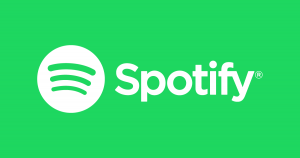Why Spotify is Good for Music
Ever since users started sharing music on the Internet in the 1990’s, the Internet’s effect on the music industry has been hotly disputed. Recently, the music community has been split over streaming music services such as Spotify and SoundCloud, with high-profile artists like Taylor Swift and Prince once pulling their catalogs from Spotify because of its relatively small royalty payments.
Spotify pays royalties to the rightsholders of a song roughly based on the number of times a user listens to it. The heart of the controversy is in how small the per-play royalty payment is. It varies based on the number of paid users and the cumulative value of advertising spots sold by Spotify in each country, but the average per-play royalty payment across all free-tier and Premium users in 2015 was between 0.6 and 0.84 cents. In this post, I will argue for one way in which streaming services are actually beneficial for music.
Music is an experience good: that is, listeners don’t know how much they will like a song until after they’ve listened to it. On the other hand, the the songwriters, artists, and record labels selling a song know everything about its contents, since they created it. As a result of this information asymmetry, potential listeners may be less willing to purchase a song through traditional outlets like the iTunes Store. However, iTunes attempts to reduce this asymmetry by allowing users to listen to 30-second previews of songs before buying them.
In contrast to iTunes’s approach, Spotify’s royalty model circumvents the information asymmetry inherent in music purchases by awarding royalties per play. This works because of a behavioral phenomenon that I will call locality. Locality consists of two related behaviors:
- Temporal locality: Listeners who like a song are likely to listen to it again.
- Logical locality: Listeners who like a song by one artist are likely to listen to other songs by the same artist, especially songs in the same album, since they are often similar in content, mood, and musical style.
Because of locality, the number of times a song is played correlates with how popular that song is and how much listeners like it. Spotify’s royalty model ties payouts to quality more accurately than the traditional model of awarding royalties based on purchases, and so is making the music market more economically efficient.

